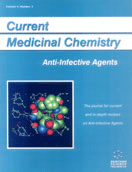Abstract
Macrolide antibiotics are noted for their intracellular accumulation and activity against intracellular pathogens such as Mycoplasma pneumoniae, Chlamydia pneumoniae and Legionella spp. Apart from antimicrobial activities, macrolides can modify host cell functions. Indeed, several in vitro- and ex vivo-studies have shown that macrolides influence polymorphonuclear cell functions as well as cytokine production by several cell types. In this way macrolides may change host immune responses, and thus may be used as immunomodulating agents. Immunomodulation (i.e., therapy that modulates the immune response of the host) may serve as an important adjuvant to antibiotic therapy in the treatment of infectious diseases or infection-related illnesses in several ways: therapy may be aimed at upregulation of the inflammatory response in case the host response is too “weak”. Conversely, downregulation of inflammatory responses may protect the host against the deleterious consequences of immune hyper-activation, when the host response is too “vigorous”, or when the host response is too persistent. The scope of this manuscript is to describe the effects of macrolides on innate immunity in the pulmonary compartment (i.e., the innate host defense during pulmonary infections and pulmonary (non-infectious) inflammation). We will first describe the various in vitro- and ex vivo-effects of macrolides; thereafter, we will give an overview of animal studies on non-antimicrobial activities of macrolides. Finally, usage of macrolides in panbronchiolitis and cystic fibrosis is highlighted. The approach of using antibiotics (e.g., macrolides) as immunomodulating agents, however, carries the risk of (respiratory tract) colonisation and possible clinical infection with antibiotic-resistance organisms.
Keywords: macrolides, erythromycin, panbronchiolitis, cystic fibrosis, chronic lung diseases, innate immunity, alveolar macrophages, polymorphonuclear cells, cytokines
 3
3

